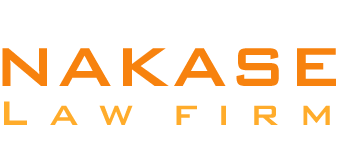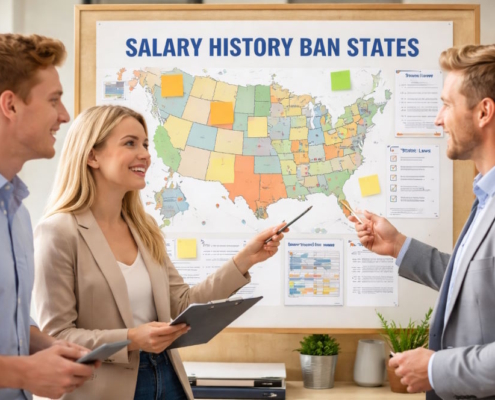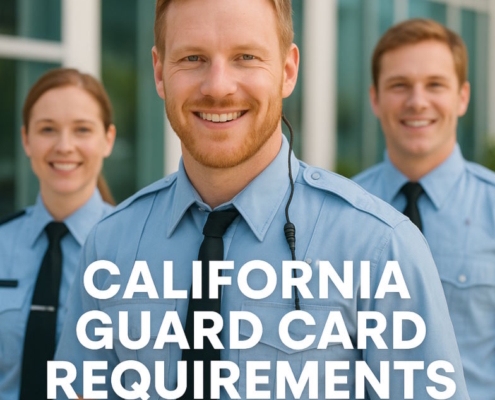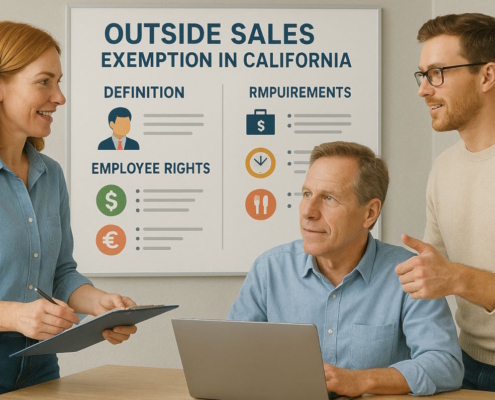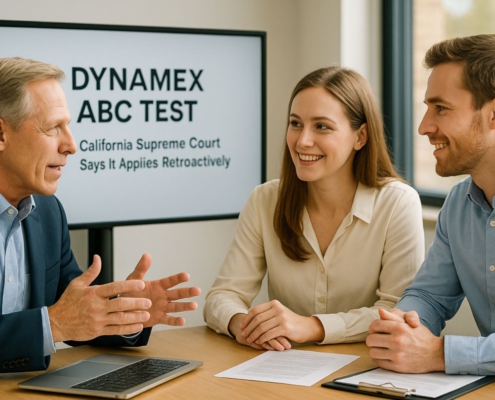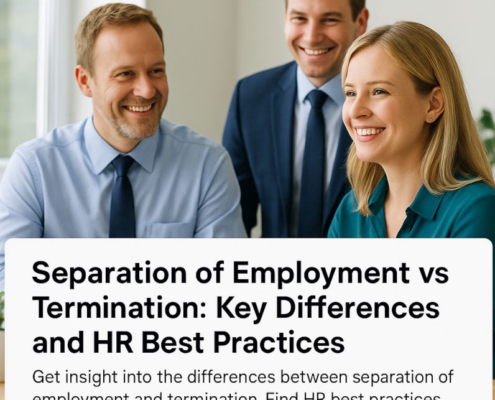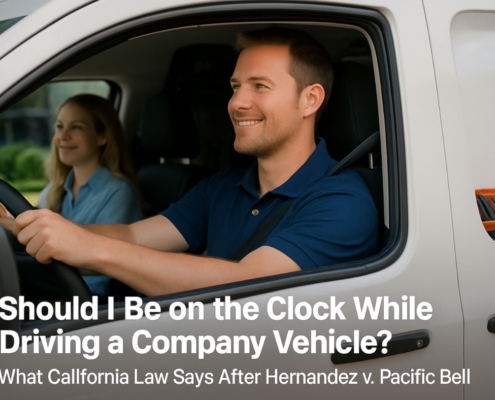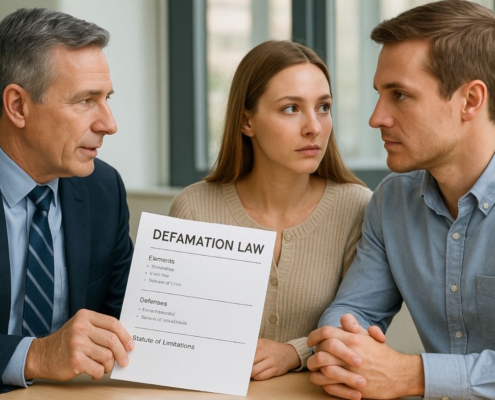Introduction
Defamation is defined by case law and statute in California. It consists of both libel and slander.
Elements of a defamation claim:
- Publication of a statement (factual),
- That is untrue,
- Unprivileged,
- Possesses an innate propensity for harm that results in “particular damage,” and
- It was at least negligent on the part of the defendant to publish the statement.
Publication, whether verbal or written, refers to correspondence to a third person who is aware of the assertion’s defamatory nature and the way it applies to the individual to whom mention is made. Publication to one person other than the complainant is adequate; it does not have to be to the “public” at large. Reprinting someone else’s slanderous remarks is typically not protected.
Legally speaking, the plaintiff has the burden of demonstrating untruth in a lawsuit for defamation involving public persons or issues of public interest (Nizam-Aldine vs. City of Oakland, 1996). The responsibility of establishing the truth is with the defendant in circumstances involving strictly private affairs (Smith vs. Maldonado, 1999). A reader also notes that the complainant can readily transfer the duty to the respondent by demonstrating that the statements in question are false, even in cases where the burden of proof is legally on the complainant to prove untruth.
Defamation Per Se: California defamation law
If the assertion is defamatory per se, the plaintiff doesn’t have to prove particular harm (such as damages to the complainant’s property, company, profession, trade, or reputation, including expenses that arose from the defamation). If an assertion defames the plaintiff on its own face—that is, without the necessity for extrinsic proof to justify the statement’s defamatory nature—it is considered defamation per se.
For instance, according to Cal. Civil Code 45a, an accusation that the plaintiff has committed an unlawful act, is libelous on its face. In one instance, a nationwide retailer of women’s clothes was accused by a non-profit organization (NPO) that supports the interests of economically disadvantaged migrant workers of engaging in unlawful business activities by hiring manufacturers that failed to pay overtime or the minimum wage.
The retailer sued the NPO for defamation. The court determined that the retailer had not proven that the claims in the leaflets were untrue. The statements weren’t considered defamatory even if they would have constituted defamation in and of themselves.
Public Officials
Public officials in California are people who seem to have responsibility or authority over how government activities are conducted. For instance, the following individuals are deemed public officials (California):
A social worker appointed by the government, a law enforcement officer, a deputy public defender, and a district attorney’s assistant.
Public Figures
A person must have attained such widespread recognition or notoriety in California that they are considered public figures for any reason and in all circumstances. In California, someone who actively works to influence how public issues are resolved may also be seen as a public figure. For instance, the following individuals have been regarded as public figures:
- Formerly serving as the city’s attorney, he served as the city’s redevelopment agency’s representative.
- A certified clinical psychologist who uses what is known as “Nude Marathon” in a collaborative setting to assist clients in overcoming their psychological barriers by taking off their clothing.
- A writer and celebrity on television.
- The leader of a church with a drug addict recovery program.
- An associate of billionaire, renowned aviator, and film producer Howard Hughes, who served as Mr. Hughes’ “personal representative” and “alter ego” from roughly 1956 to 1970.
- A real estate developer who wanted to construct a housing complex close to a hazardous chemical plant, and
- A “prominent and vocal feminist novelist” who is opposed to pornography.
Public Figures with Limited Purpose
A person who willingly enters or is drawn into a specific public debate is considered a limited-purpose public figure. Her endeavors to put herself in view of the public are sufficient; it is not essential to demonstrate that she truly obtains notoriety in public discourse (Copp vs. Paxton, 1996). The claimed defamation must be pertinent to the plaintiff’s deliberate involvement in the public discussion, as is the case for every limited-purpose public figure (if the subject calls for skill or specific expertise, the plaintiff’s qualifications as a specialist would be applicable).
The following individuals have been classified as limited-purpose public figures in California:
- In Kaufman vs. Fidelity Federal Sav. & Loan Association (1983), the top executive of two corporations in a California community objected to the rezoning of land next to his property;
- A person who openly professed to be an authority on earthquake protection and a seasoned participant in earthquake rescue efforts (Copp vs. Paxton, 1996).
Actual Malice & Negligence: California defamation law
A private figure complainant in a defamation claim in California must demonstrate that the other party was at least careless about the veracity of the purportedly defamatory remarks. Public authorities, all-purpose individuals, or limited-purpose personalities must demonstrate that the person in question acted with genuine malice, meaning that they knew the statements were untrue or carelessly ignored their untruth.
Privileges & Defenses
The fair reporting right, the opinion and reasonable comment protections, and significant truth are only a few of the privileges & defenses that California courts acknowledge in defamation cases.
Additionally, there is an important provision in section 230 (Communications Decency Act) which could shield you in the event that a third party—not you, your employee, or someone working under your supervision—posts something libelous on your website or blog.
1. Fair Reporting Privilege
The fair reporting privilege has been codified by California courts in Cal. Civil Code 47(d) and (e). Publicly accessible government documents, official reports from governments, and remarks made by public authorities are typically covered by the privilege.
2. Neutral Reporting Privilege in California defamation law
The neutral reporting privilege has not been officially acknowledged by the California Supreme Court. However, the neutral reporting privilege has been used by a number of federal courts in instances involving California defamation law, and there are fairly strong indicators that the legislative California courts would use the privilege in the right circumstances.
The California Supreme Court hinted that it would be open to taking the impartial report privilege into account when it comes to defamation of public figures. The California Supreme Court ruled that the impartial report privilege wasn’t applicable to situations in which the person seeking relief was a private individual.
The case concerned a claim that the complainant, who was a private citizen, had taken part in the Robert Kennedy killing when he was twenty-one years old (Globe International vs. Khawar, 1998). However, the court did not address whether the unbiased report protection would be applicable in the event that a prominent figure was the subject of the defamatory comment.
Furthermore, a number of lower courts in California have endorsed the privilege without explicitly stating that it is applicable.
Two federal tribunals in California have used the neutral reporting privilege in the following circumstances; however, its use is not legally obligatory on state courts:
- A collegiate basketball player, who is considered a public personality, implicated his coach, who is also considered a public figure, in taking part in payments that team boosters made to the player. Time, Inc. vs. Barry, 1984). The court determined that the impartial report privilege could be applied without the accused person’s repute for “trustworthiness” being a prerequisite.
- The information about a famous actor’s personal life was revealed by the newspaper News of the World. News Group International vs. Ward, 1990). The tabloid printed the actor’s rebuttal in addition to the accusation, the court stressed, and the republication took place in a fair and truthful manner.
Defense of Wire Services
In general, California does not accept the wire service argument. In an undisclosed ruling, a California trial judge did acknowledge the wire service defense. Gannett Co., Inc. vs. Peper (2003). Other courts in California are free to reject the judge’s choice to use the wire service defense because it was made at the level of the trial court and was not published.
Statute of Limitations: California defamation law
The statute of limitations for defamation in California is one year (340 c of the California Code of Civil Procedure).
In accordance with the California Civil Code, California enforces the single publication rule. Regarding online publishing, a California Court of Appeals acknowledged the single publication norm. Gilbreath vs. Traditional Cat Association (2004).
FAQs
1. Are Libel & Slander synonyms?
Slander and libel are sometimes not understood in the right way. They may be used improperly. These two are forms of defamation. Written or printed defamation is referred to as libel. The verbal defamation is called slander.
2. What’s defamation?
Defamation is an unwarranted & unprivileged statement of fact. It harms the reputation of a person and is spread negligently or with ill intent. The plaintiff will have to show the following to prove a claim of defamation:
- The plaintiff was not the only individual to whom the defendant made an unprivileged speech;
- The assertion was an untrue statement of fact.
- The plaintiff was the subject of the statement, or it was believed to be such;
- The claim was made carelessly (actual malice has to be demonstrated if the complainant is a “public person”).
- Actual harm resulting from the claim or that the remark was defamatory on its face or slanderous in and of itself.
3. How much can I make someone pay for telling lies about me?
The particulars of the case will determine that. There can be cases when the person feels deeply insulted, but damage to their reputation is negligible. Conflicts between neighbors or family members often reflect this. Take a situation. A former employer makes false statements to a plaintiff’s potential employer to keep the plaintiff from obtaining employment. Damages may be substantial in this case. Depending on how serious the misbehavior was, punitive damages may occasionally be granted.
4. “Slander per se” & “libel on its face”: What is the meaning?
Certain remarks are deemed defamatory even in the absence of proof of actual damages because they are deemed damaging in and of themselves.
The statement stated in writing creates a prima facie case of slander without considering any other factual details, provided that the statement has the apparent and predictable (probable) impact of defaming the plaintiff to an average reader.
An oral statement is considered slander in and of itself when it is intentionally made against the complainant.
- It may accuse the plaintiff of a crime,
- Imports the existence of an invasive, contagious, or abhorrent disease (like syphilis or HIV),
- Is likely to cause personal harm to the plaintiff in relation to her status, job, profession, or business through a material false implication of incapacity, or
- It is likely to result in the loss of profits.
5. Information on libel and slander laws: How do I get it?
There is a description of libel and slander in Section 4448.9 of the California Civil Code. California statutes are available for free at a local law library or at California Legislative Information. You can also locate cases that explain the California defamation law of libel and slander by using your local law library.
Common defenses against defamation claims
Defenses that are frequently invoked in defamation cases are:
- Truth: The truth is an incontrovertible defense. The defendant may prove that the allegedly defamatory statements are true. The plaintiff does not have the right to a verdict. Any plaintiff considering going to court to pursue a defamation suit must consider the possibility that the other party would defend by asserting truth. Any defendant ought to keep in mind that proving the veracity of the claim made to the court is necessary to win a truth defense.
- Not a Declaration of Facts/Opinion: Only assertions of fact (not views) are considered in defamation lawsuits. An opinion is a statement that cannot be proven as false or true. A fact is a statement that can be proven or not. When making a determination as to whether the statement is a viewpoint or an assertion of fact, the court takes into account the context of the statement. Whereas the statement “Bob is a scumbag” is not likely to be defamatory as it is an opinion that is arbitrary, the statement that is false, like “Bob hits Joe in the face,” would most likely be defamatory because it accuses Bob of an offense.
- Privilege: Certain utterances are deemed privileged, such as testimony provided under swear in a court of law. Only statements that are not privileged are considered defamatory.
- Libel-Proof Plaintiff: Someone whose reputation is so damaged that it is worthless. For example, a guilty serial killer is unable to demonstrate harm.
- Death: Although disparaging the deceased is not polite, the deceased cannot file a lawsuit.
Typical Misconceptions
There is a lot of false information circulating because the topic of defamation is so unclear. Here, we address a few of these myths:
1. “I told just one additional person!”
This isn’t a defense. Slander and libel just entail the defendant talking to another person besides the one being sued.
2. “I was just repeating what I heard from someone else!”
Furthermore, this is not an explanation. There is a legal liability of a defamatory comment by repeating a defamatory comment by a person.
3. “But I either left out or changed the initials of the person to whom I was alluding.”
The question in a defamation action is whether the defamation was found to be reasonable, such that the plaintiff was the one who was referred to. For example, the listener would assume that the US president was being referenced if it is mentioned “some unknown government official housing at 1600 Pennsylvania Avenue.”
4. “He lied about me in court. I want him arrested for slander!”
Perjury and slander are frequently confused. Lying in court or giving false information under oath is considered perjury. The District Attorney’s office has the authority to pursue perjury. Unfortunately, since court testimony is regarded as “protected,” it cannot serve as the foundation for a defamation action (libel and slander are restricted to non-privileged utterances).
5. “But it was just an opinion because I said, ‘I think,’ before my comment!”
Courts consider every aspect of a statement. Although it is accurate that everyone has the right to express their opinions, a factual remark does not always become an opinion when “I think” is added before it.
